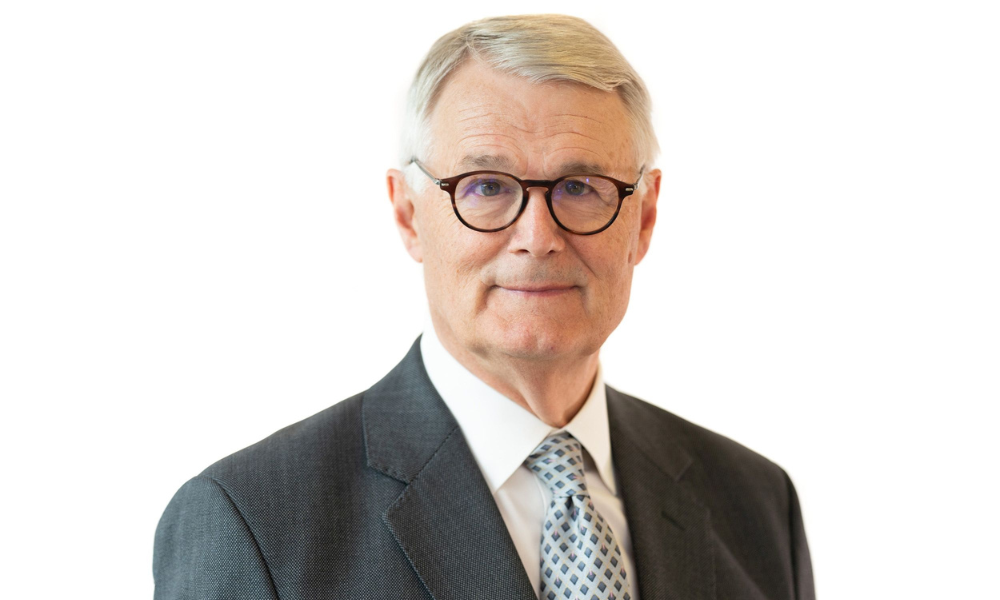Despite slower growth, there is little sign of the Bank of Canada pivoting to lower rates

Canadian investors look forward to 2024, after another year of living dangerously with higher interest rates. Widely predicted recessions in the G7 have not occurred, even if growth slowed sharply in Canada in mid-year, and the Bank of Canada (BoC) has raised rates some 500bp and reduced its balance sheet size by almost 45 percent (since March 2021).
Little sign of an early pivot to ease policy from the BoC
Despite slower growth and disinflation, there is little sign of the BoC pivoting to lower rates. Indeed, the current policy rate of five percent compares with the BoC’s 2023 estimates of the neutral policy rate of two to three percent, and the 10s/2s yield curve remains deeply inverted, suggesting policy is highly restrictive. Further, the BoC is not projecting a return to inflation at the two percent target until mid-2025.
Why did the Bank of Canada tighten so much in 2022–23?
Why has 500bp of BoC tightening been required, to date, plus quantitative tightening, to achieve the disinflation so far? Several factors have contributed.
First, the BoC did not start from a neutral policy stance but from a highly stimulative one, with zero rates and a vastly expanded balance sheet (which almost quintupled in size to CDN$575 billion in March 2021 versus CDN$120 billion a year earlier). Lagged stimulus from earlier quantitative easing may have increased inflation risks in 2022–23. Second, the tightening in the labour market risked second-round inflation effects, should inflation expectations destabilize. Third, after breaching the two percent inflation target, the BoC did not wish to risk a prolonged overshoot by failing to tighten policy sufficiently. Fourth, until growth stalled in mid-2023, aggregate demand had held up well, helped by relatively high employment, COVID windfalls, and the high share of fixed-rate mortgages protecting consumers from sharp rate increases. Fifth, on aggregate supply, the BoC lowered its potential output growth estimates by as much as one percent for 2023 after COVID supply-chain disruptions, despite faster labour-force growth. Finally, at the margin, fiscal policy supplied net stimulus to the economy in 2022–23, despite real growth of 3.4 percent in 2022.
A perfect storm for tightening
These factors created a perfect storm for sizeable monetary policy tightening, some cyclical and some structural. Interest-rate-sensitive sectors and particularly asset classes with long duration, like real-return bonds and real estate, suffered significant losses in 2022–23 as they repriced to higher discount rates on future cash flows.
Higher inflation regime not needed for higher rates
The evidence of 2022–23 and the Goldilocks period suggests a switch to a higher-inflation regime is not needed for the current higher interest rates to become the new normal. Indeed, the closest parallel with 2023–24 may be the Goldilocks era of the early 2000s, when inflation was subdued, but nominal rates were again in the three-to-five-percent region.
Ending zero rates and AI may sustain higher rate regime
Also worth bearing in mind is the impact of any productivity changes resulting from gen AI and the end of zero rates. Widespread implementation of modern IT and the PC appeared to boost productivity in the Goldilocks period. Without “creative destruction,” as Schumpeter described it, very low rates can cause misallocation of capital if borrowing costs are below the true marginal product of capital, keeping inefficient companies afloat and depressing productivity growth.
Although Canada largely escaped the worst of the global financial crisis in 2007–09, and rates did not fall to zero, G7 productivity growth was depressed in the post-GFC period of near-zero rates, with a long tail of companies with very weak productivity growth. Should gen AI boost Canadian productivity growth, as new technology is implemented, this could be another factor sustaining a higher level of equilibrium interest rates in the economy as the new normal, though the precise timing of this is uncertain.
Robin Marshall is director, global investment research, FTSE Russell



